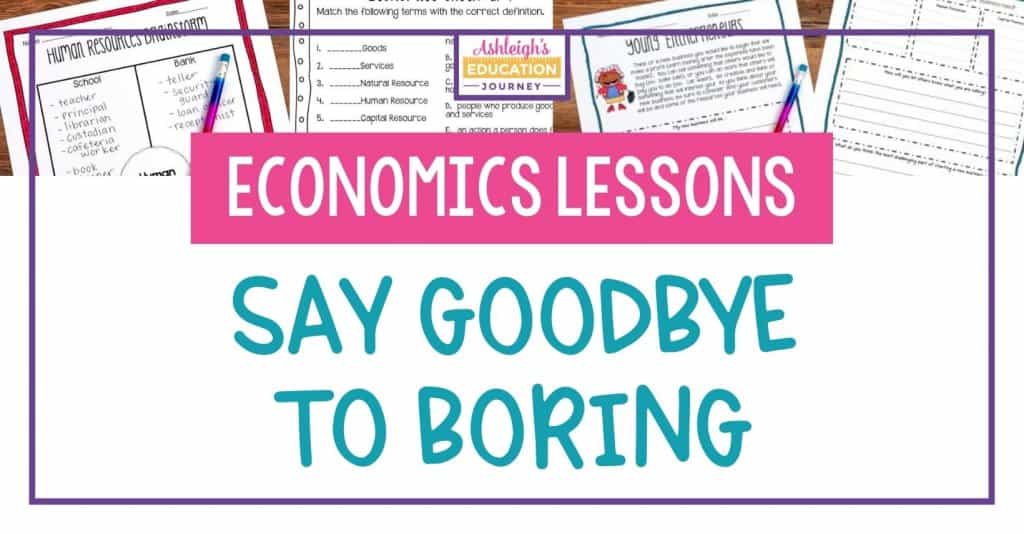
There are SO MANY fun ways to make economics activities engaging and hands-on for students, and it’s a great way to incorporate a little math into instruction. This post shares some of my favorite ways to teach economics to upper elementary students.
I begin my economics unit by teaching about goods and services. I have my students use magazines and newspapers to create a collage. They divide a sheet of construction paper in half and label one side with “Goods” and one side with “Services”. Underneath each label, students should glue pictures of examples of goods and services.
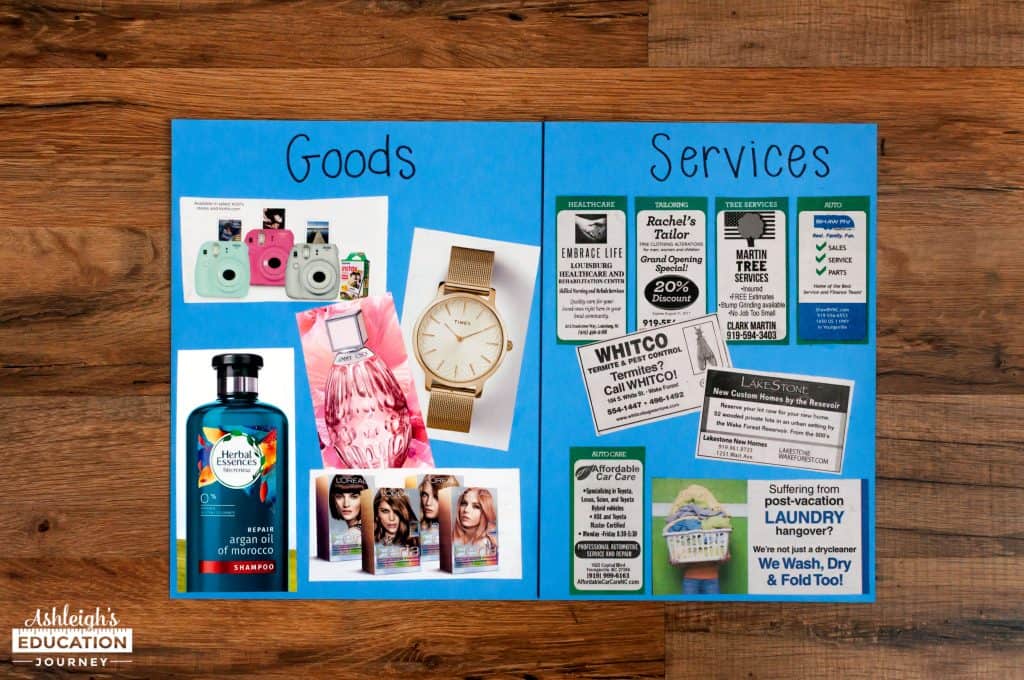
I love reading A Chair for My Mother to further develop the concept of goods and services, and it also ties in nicely to needs and wants. I follow the text with a goods and services sort, where students sort pictures into either category-good or service.

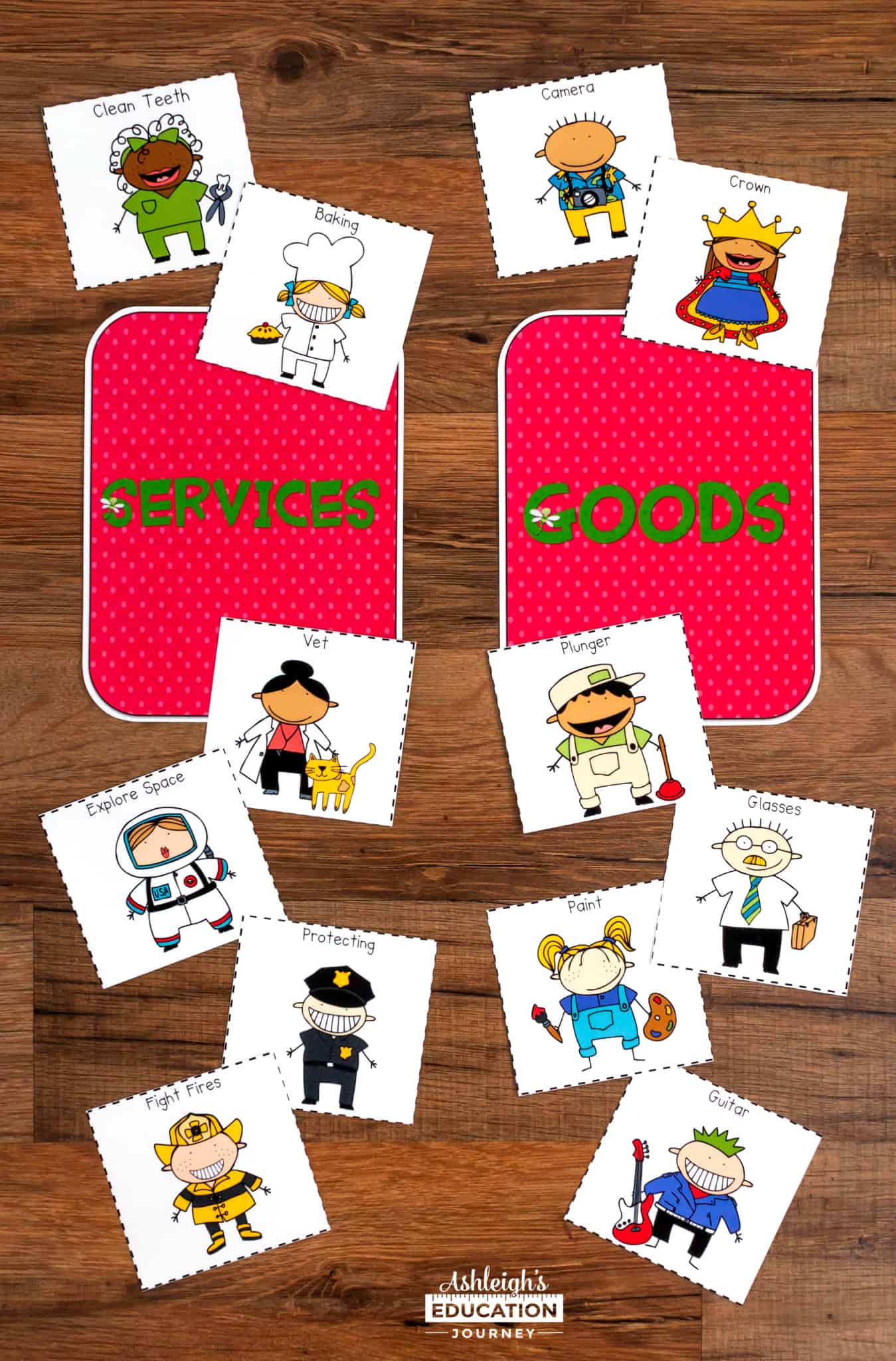
After teaching about goods and services, I begin teaching about productive resources: human resources, natural resources, and capital resources. I love using this Social Studies Weekly video to introduce Productive Resources. I then have students complete a productive resources sort.
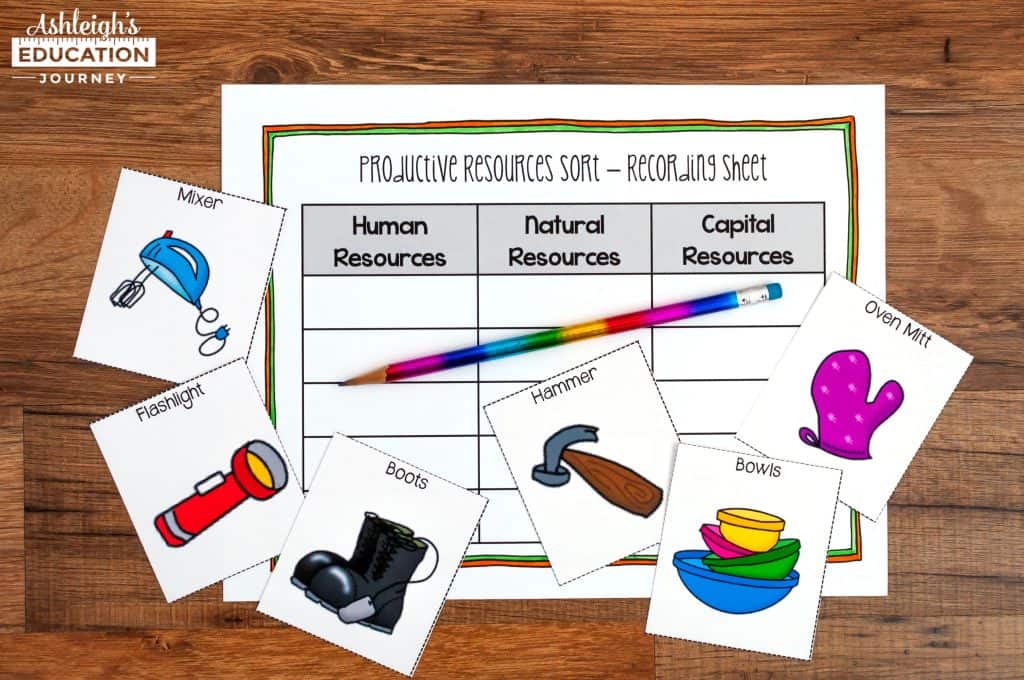
Once my students have a good general understanding of productive resources, I begin to teach them more thoroughly. I start by teaching about human resources, which is a fairly easy concept for students to understand. One of my favorite activities is to have students complete a human resource brainstorm activity. Students work in groups and try to brainstorm human resources needed in a school, bank, restaurant, and hospital. Groups complete against each other to see which group can think of the most human resources.
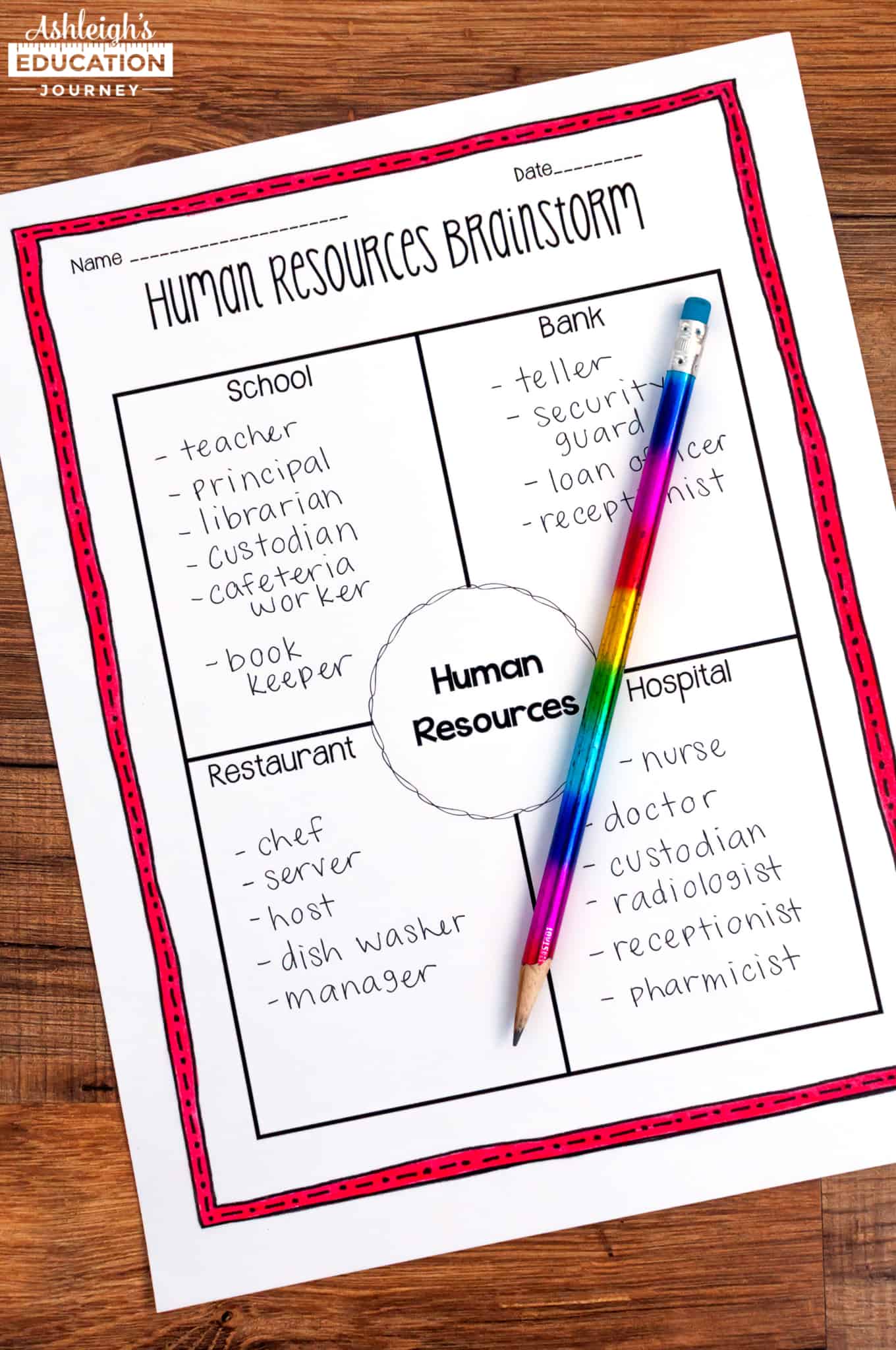
After introducing human resources, we begin talking about capital resources. I LOVE using a top ten list for this. I know that it sounds so simple, but it is SUCH a great lesson for students. I’ve found that it’s a good idea to model this task with a different topic first. For instance, what might capital resources would a restaurant need. As a class, we brainstorm every possible capital resource may need. This allows students to practice differentiating between human, natural, and capital resources. After we do this, I explain that students are going to work in their groups to brainstorm every capital resource a TEACHER needs for his/her classroom. I’ve learned that it is best for students to focus on a classroom, rather than a whole school, since they have much more personal experience with a classroom. After students brainstorm what a teacher needs, they must work as a group to develop a top ten list. The whole group must agree on the list, and students have to determine the ten most important resources for a classroom. This requires so much discussion about capital resources, and I love getting to hear what resources students think are the most important.
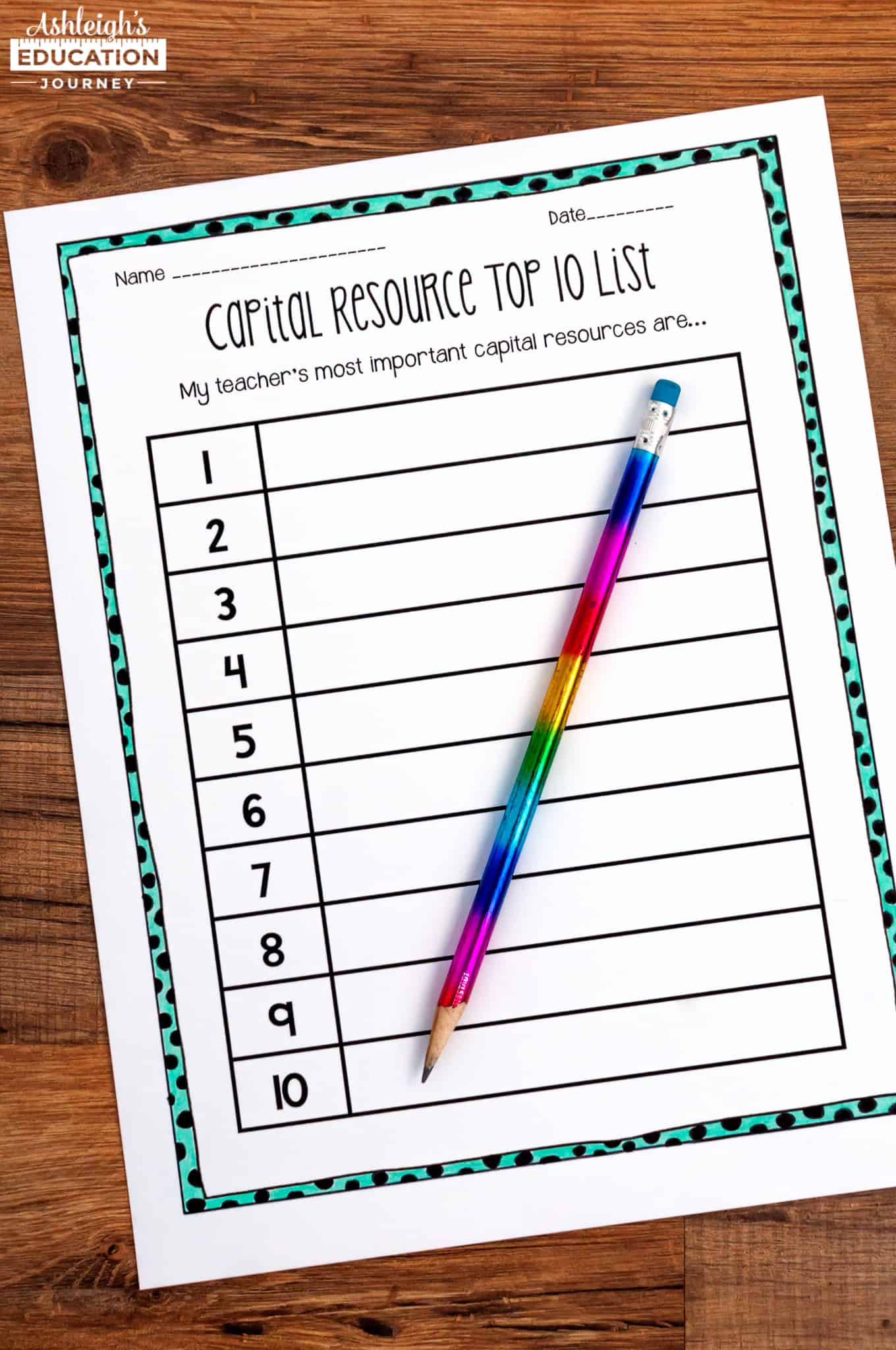
I have a few other lessons that I use as needed, where students create a types or resources foldable and a natural resources after using The Giving Tree. I like to give students a brief economics checkup to assess their understanding of the unit. The first mini assessment covers what I have taught up to that point in the unit and allows me to see if I need to spend extra time on those topics, of if students are ready to move on to new content.
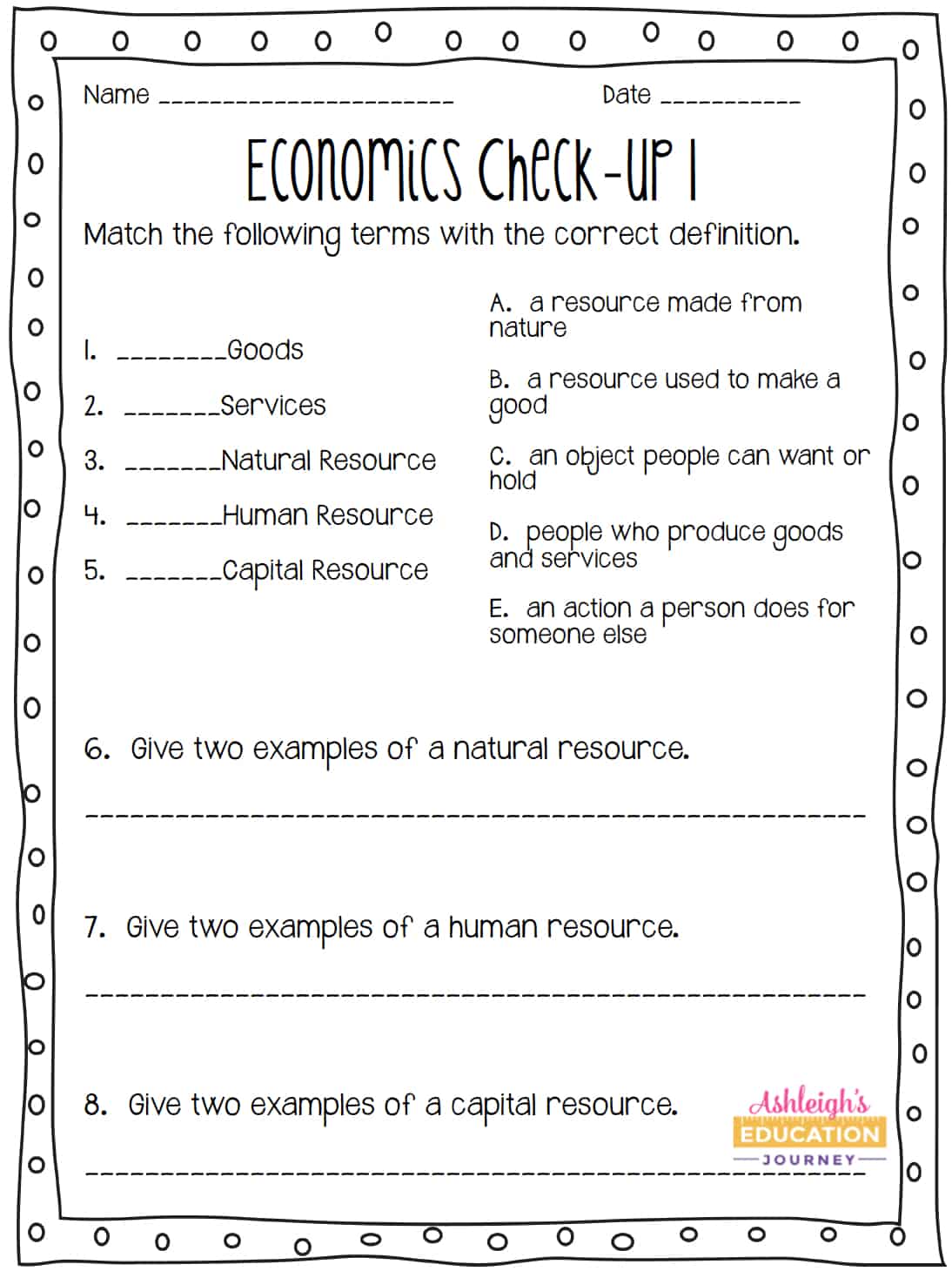
Once students are ready, I then teach about entrepreneurs and entrepreneurship. To help make this relevant for students, I have students develop their own business plan. Students describe their business and explain why they think their business will make a profit. Students list the natural resources, human resources, and capital resources they will need for their business. Then, students determine how to best advertise for their business. I had a fifth grade teacher recently take this activity FAR, and she had students actually start their business and held a 5th grade business expo. It was amazing!
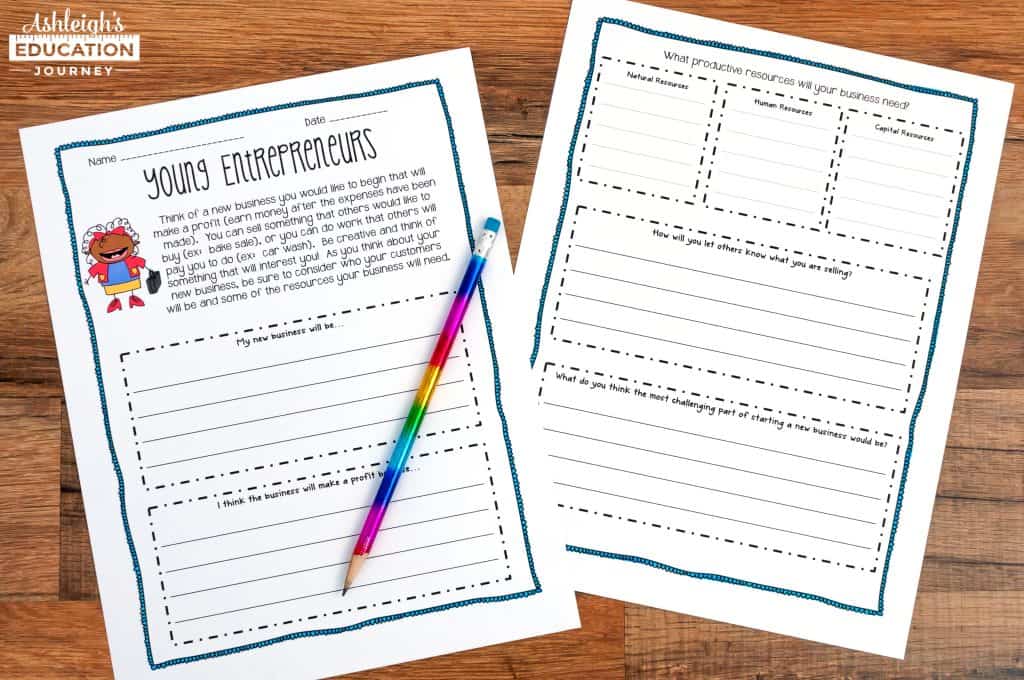
We do a couple skill practice pages where students differentiate between a human resource and entrepreneur and producers and consumers. There is where I squeeze in more of that all important economics vocabulary. By the end of the week, I give my second economics check-up or assessment.
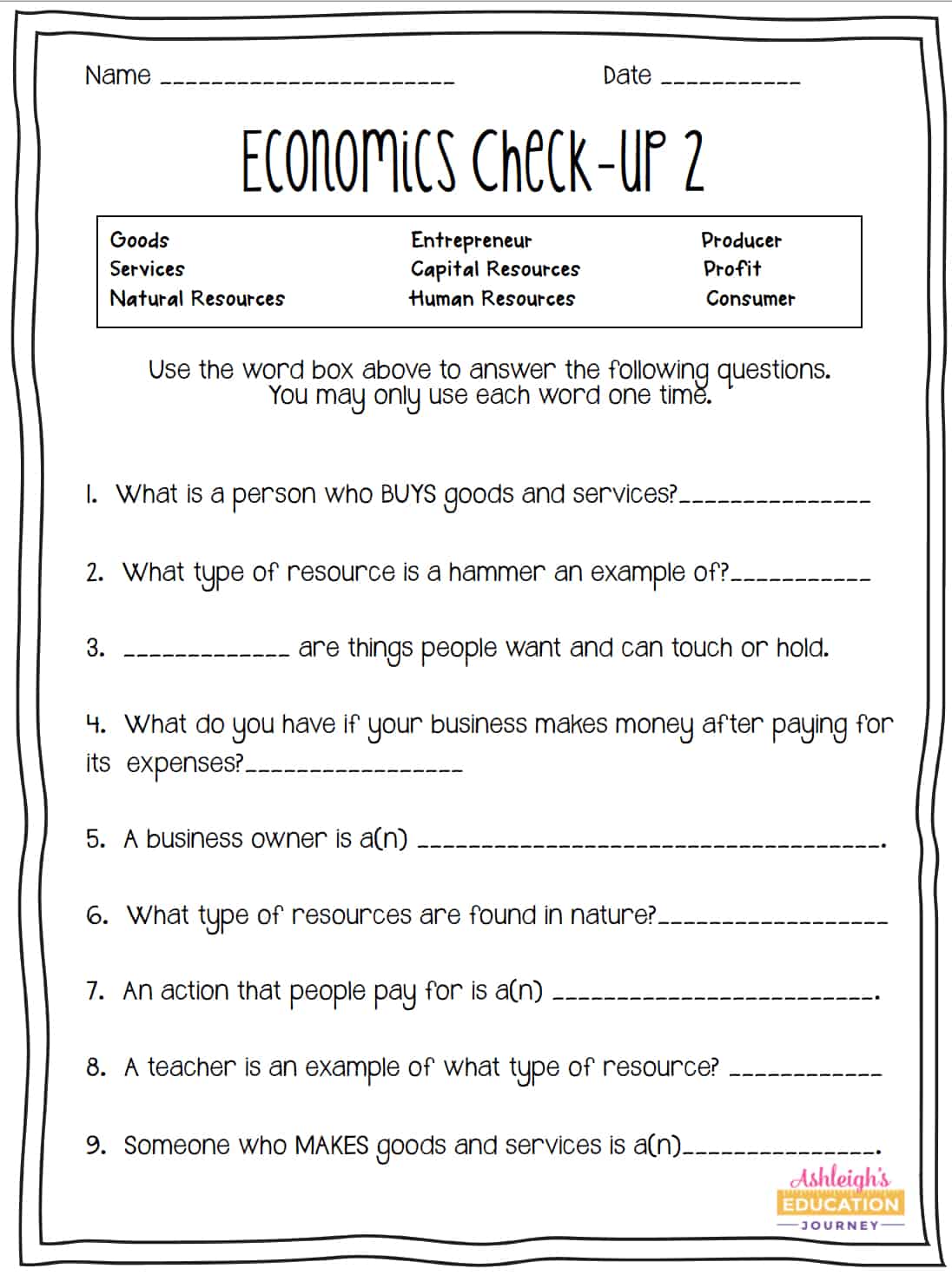
In the third week of economics activities, I introduce creating and maintaining a budget, which is great for teaching personal finance and economic decisions. I created an activity where students decide how they would spend $250. I have to keep updating the electronics section, because the technology keeps changing! I originally had a disposable camera on the list, and my students had no idea what that was.
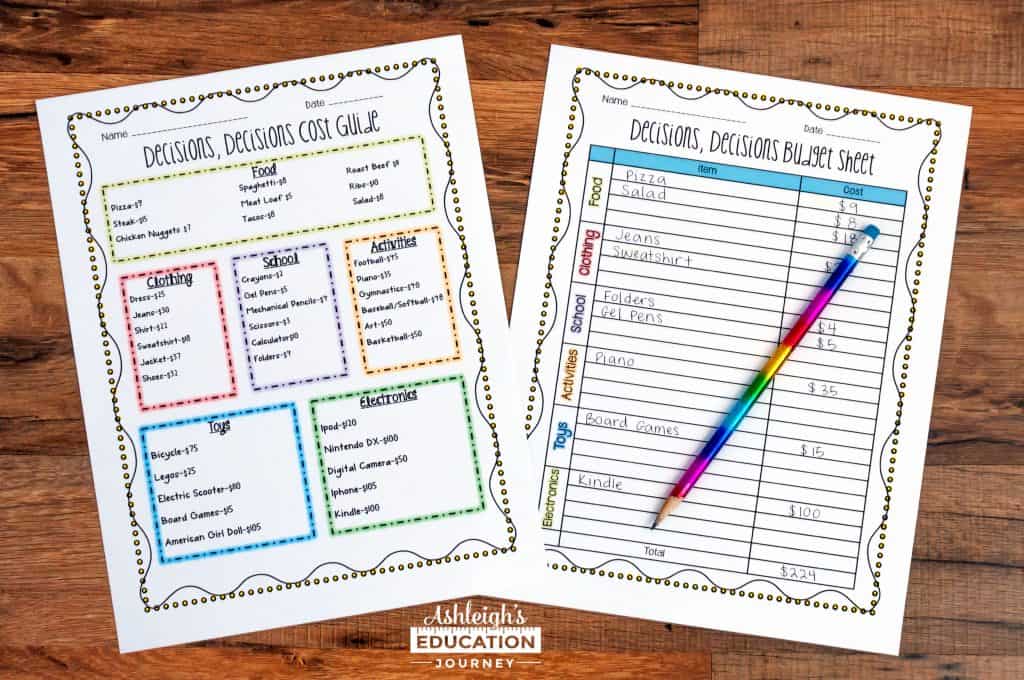
Creating a budget leads into a great conversation about opportunity cost, because we all know we can’t have everything we want. I read Paying Taxes and have students work in cooperative groups to create anchor charts that explain the types and purposes of taxes. This is a great government review for students.
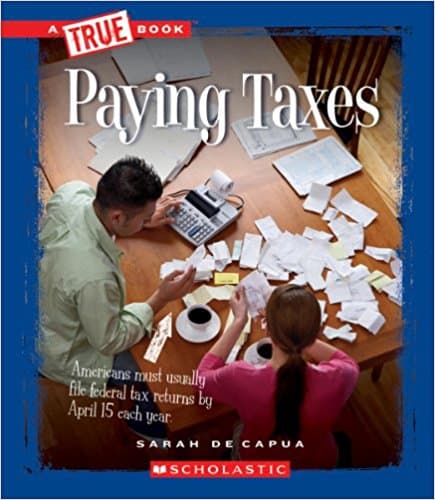
Just to be on the safe side, I do go ahead give another check-up. There is so much new vocabulary in the unit, and I’m constantly checking to see what I may need to reteach. The check-ups are short and sweet, so they don’t use up too much class time.
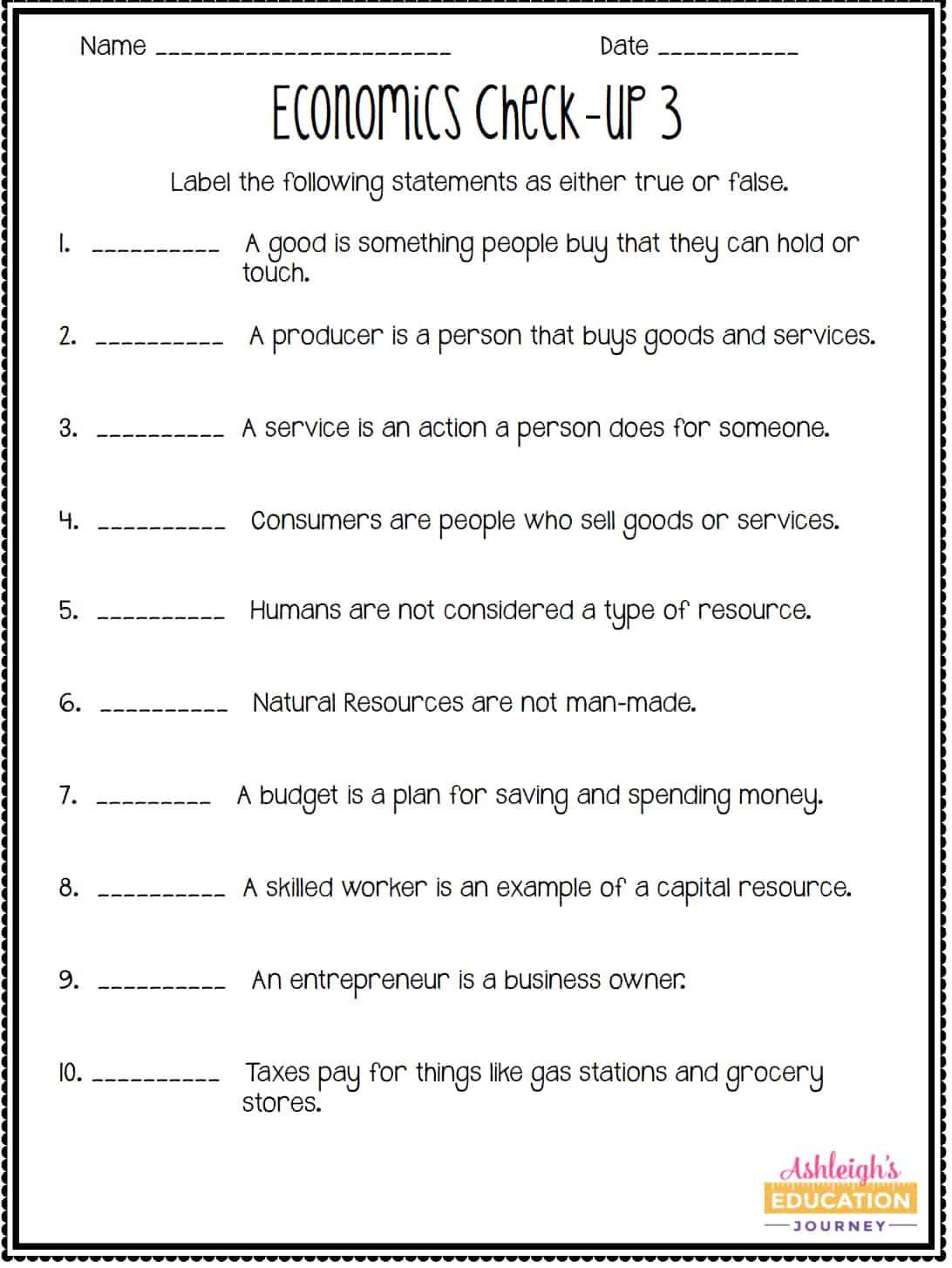
I then get to move on to some of my favorite economics lessons in the unit. I teach students about supply and demand and use a brief Brain Pop video to help explain the concept. To reinforce the idea in a meaningful way, I play a bit of a trick on my students. I secretly buy mini cupcakes for all students in my class. I keep one of the cupcakes on my desk and don’t say anything about it. Naturally, students notice it right away and begin asking about the cupcake. I pretend to be exasperated and begin to negotiate with students. Okay, okay, I’ll consider giving you this cupcake. What is it worth to you? What could you give me? Every year students bite and a bidding war begins. Within a few minutes students offer ridiculous amounts for the cupcake. I finally give the highest offer the cupcake, and once I see that I have everyone’s attention, I show the class that I do have one for everyone. The person who got the original cupcake usually complains that it’s not fair, and I ask him/her to explain why. All of this leads in to an amazing conversation on supply and demand. When there was only one cupcake (scarcity) the price was WAY higher, but when there was enough for everyone, the price lowered.
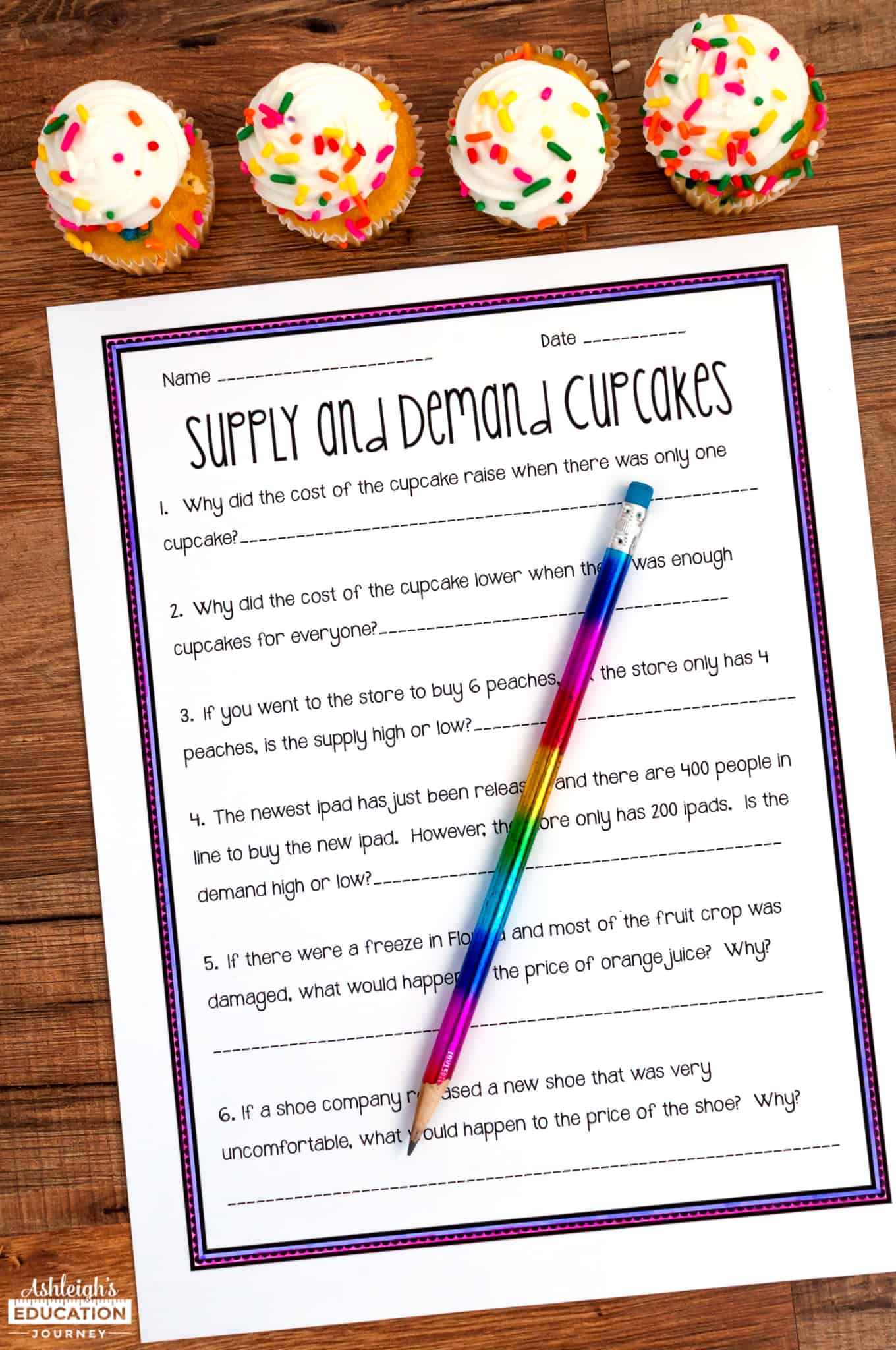
I then introduce competition with another fun lesson. Students choose one or two school supplies from their desk and place a price tag (sticky note) on or beside the school supply. Then, students take their recording sheet and walk around the room shopping for school supplies to purchase. After students shop we meet back together as a class and discuss which items they would choose to purchase. Anytime there are more than one of the same item for sale, I ask students to explain how they chose to purchase that item. Almost always, the answer is, “because it’s cheaper”. This leads into a great conversation about competition and how it effects the marketplace.
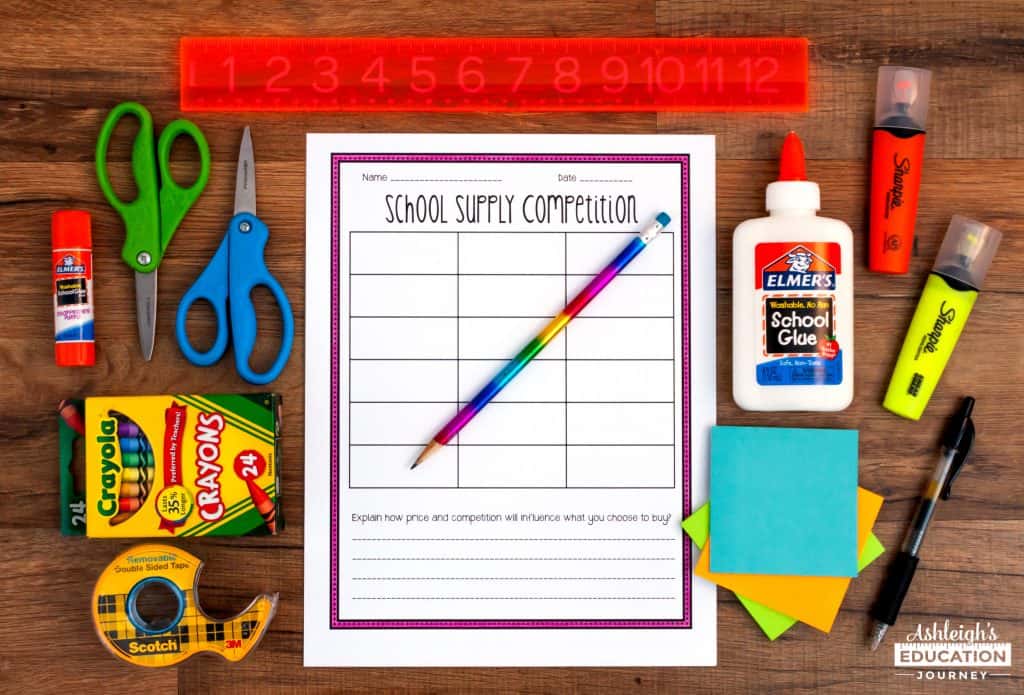
I then introduce the concepts of imports and exports, which I tie in with prefixes. I have students complete a sort, where they sort different situations with import or export. This is one of the harder concepts for my students, so I like to read a picture book and show another BrainPop movie. I also have students look around the classroom to find examples of different imports. Typically, almost all students are wearing an import of some type.
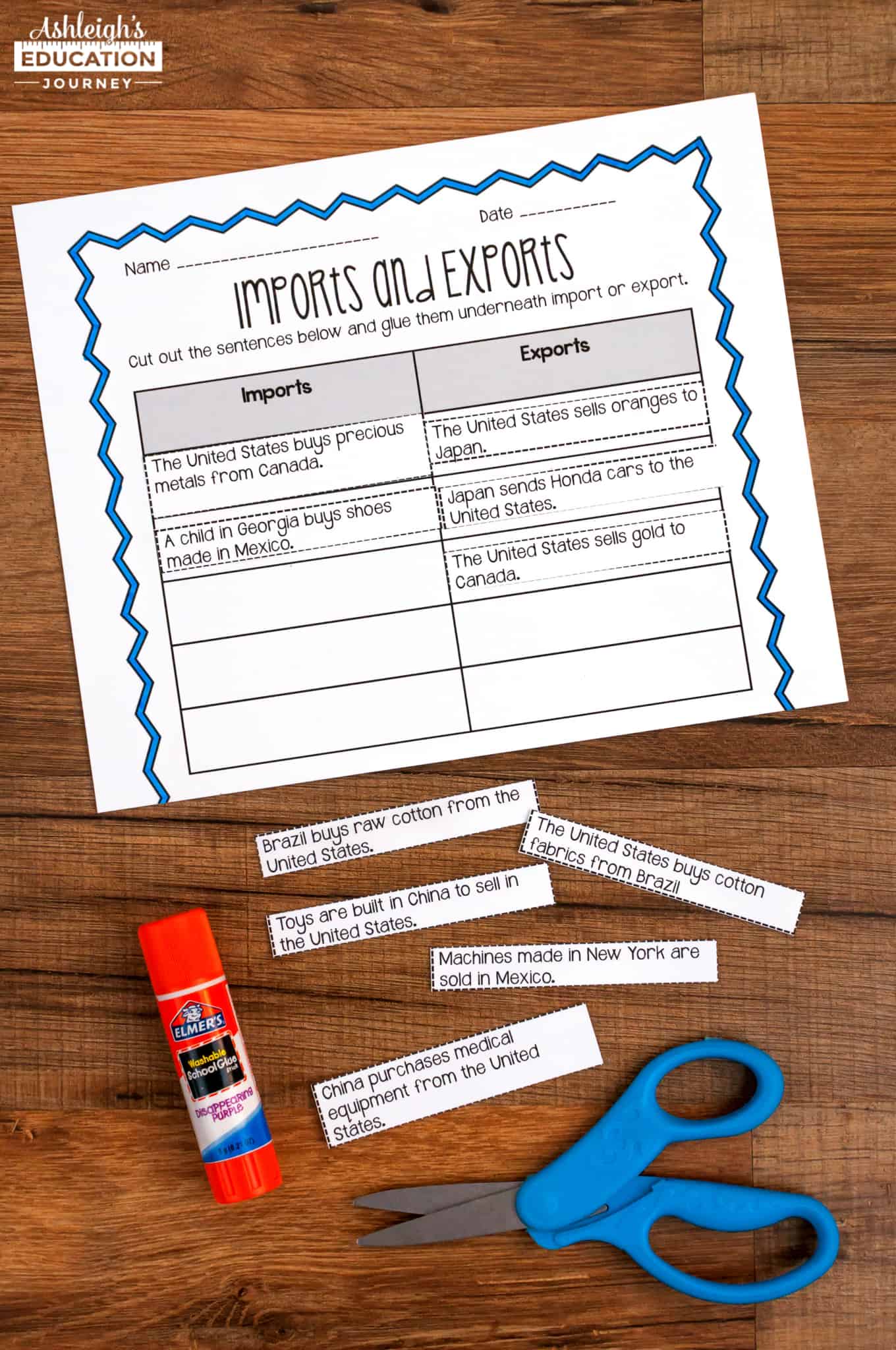
I follow that with a couple lessons on interdependence, which I tie-in to food webs in science. I end the unit with an economics test that covers everything taught within the unit.
Vocabulary is critical part of economics lessons. I created an economics vocabulary freebie that’s pretty creative. There are two pages with boxes for every term students should know and a direction sheet for students. Students will write a synonym for four words, antonym for four words, use four words in a sentence, give examples of four words, and draw a picture of four words, and write a definition for four words. There cool part is that students get to decide where to use each representation. You can download this here!
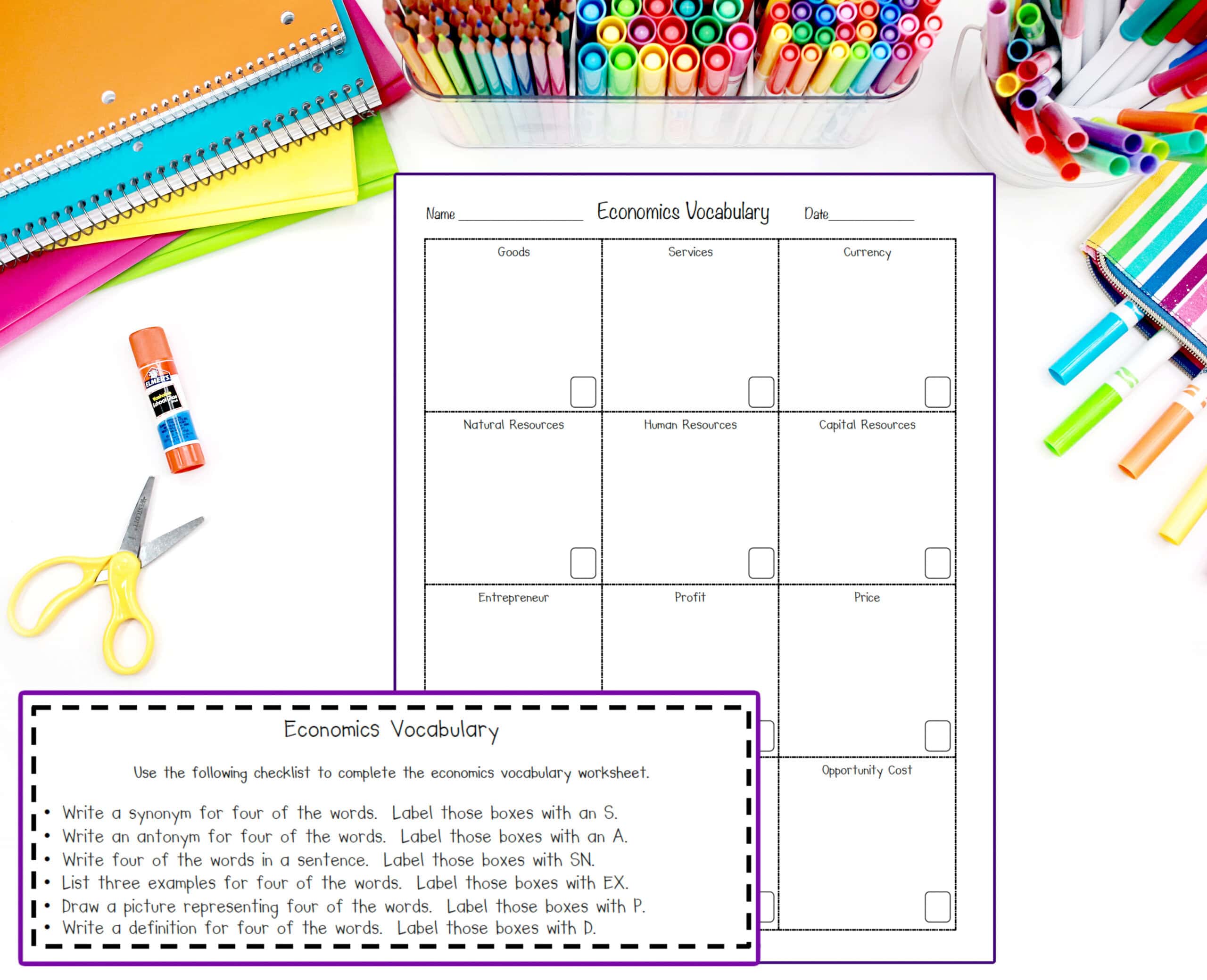
I always love integrating social studies and reading, so I like to incorporate economics in my reading instruction too, or maybe I should say incorporate reading instruction into my economics lessons. I’ve created a set of Economics Reading Passages that tie in perfectly to my economics unit! The topics included in the close reading pack are: productive resources, supply and demand, goods and services, economic decisions, and personal finance. Each topic includes three differentiated reading passages that are written on three different levels.
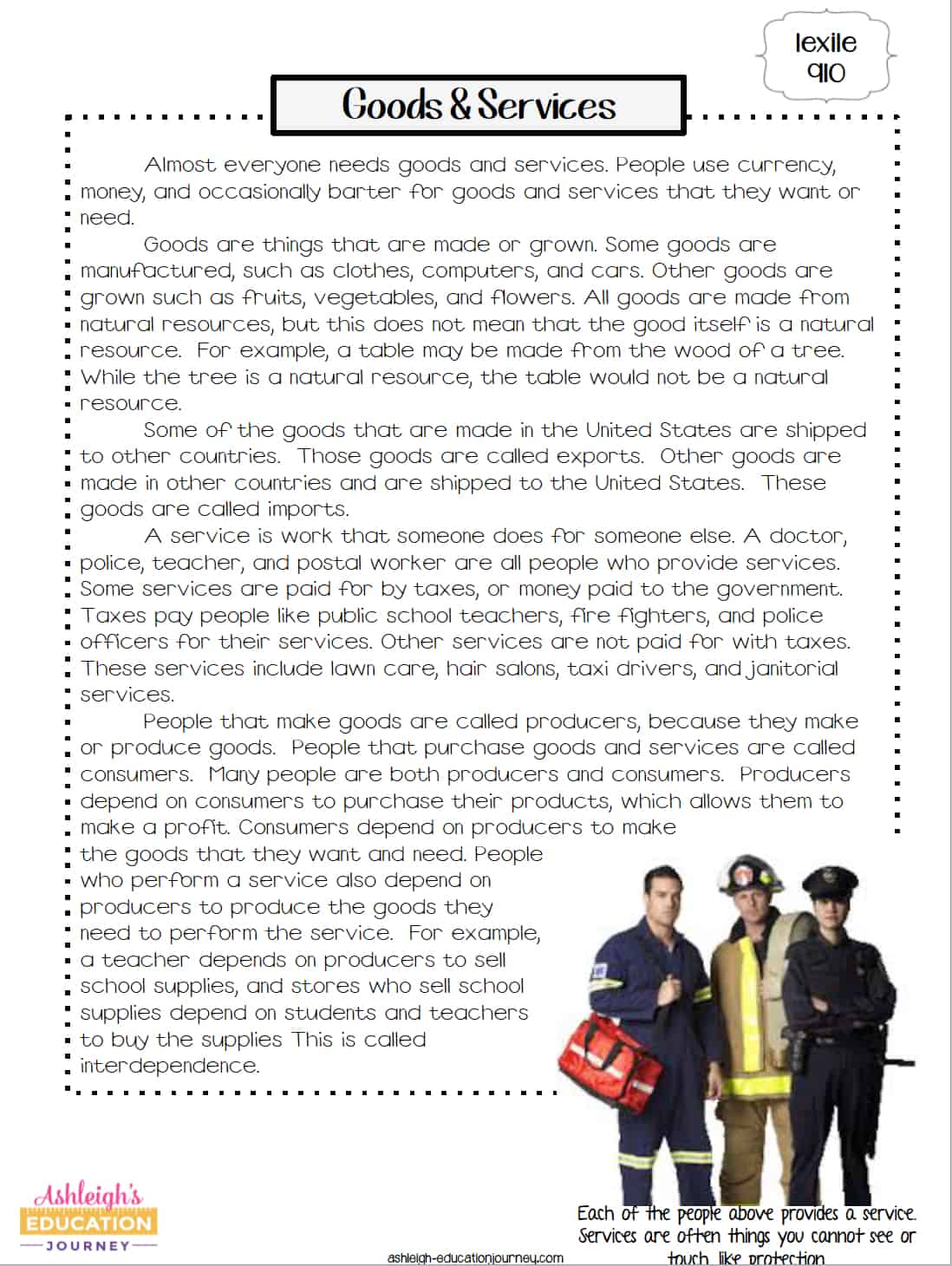
I then have three sets of questions for each passage. The first set of questions is more basic with explicit questions, and the second set of questions requires students to think about vocabulary and nonfiction text features. The third set of questions is great for constructed response practice, because students respond to the question with a paragraph.
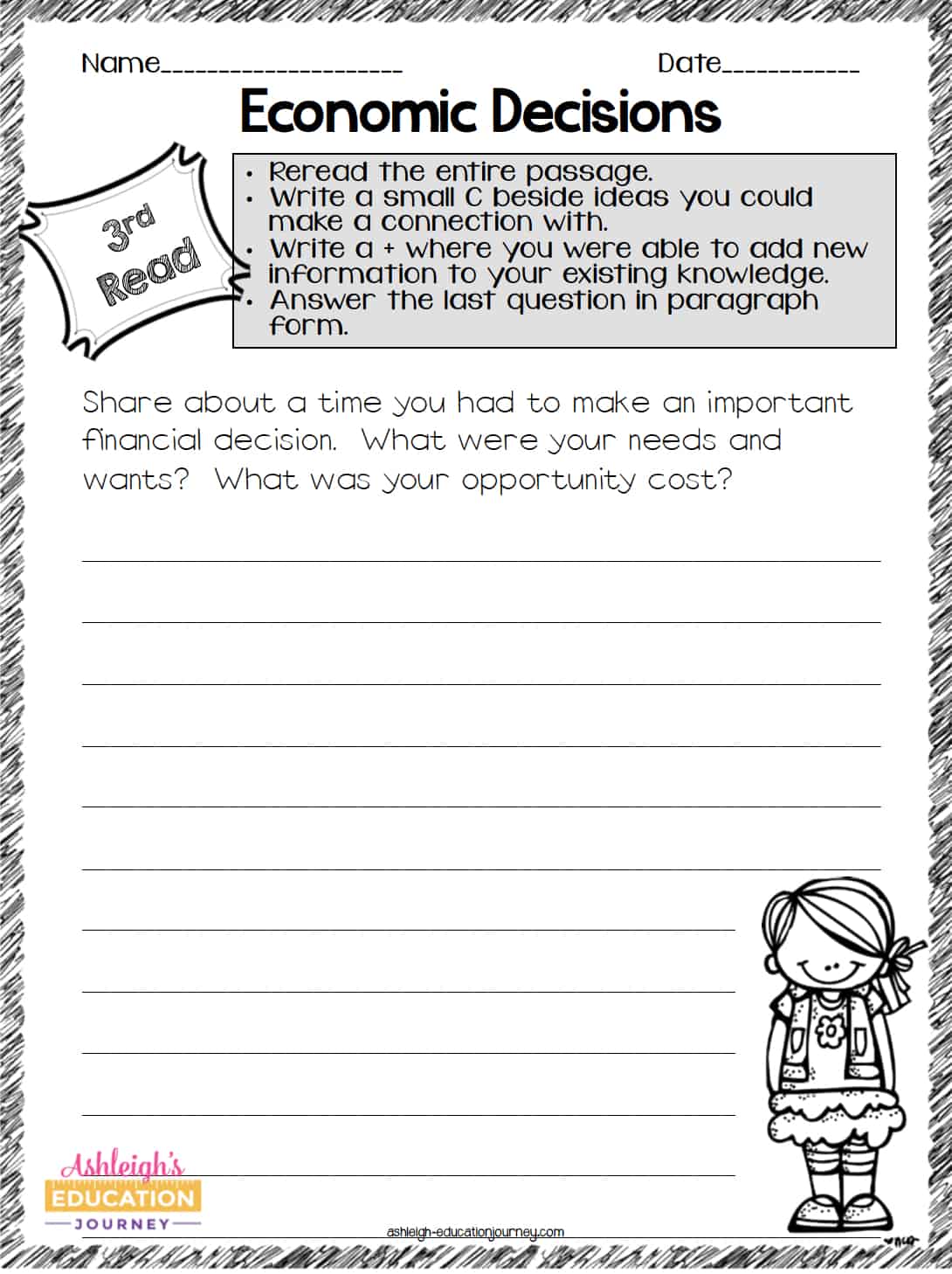
As we work our way through the unit, I have students add new content to their social studies interactive notebook. This is such a great way to help my students organize and process new information. I use a different template from almost all of my economics lessons.
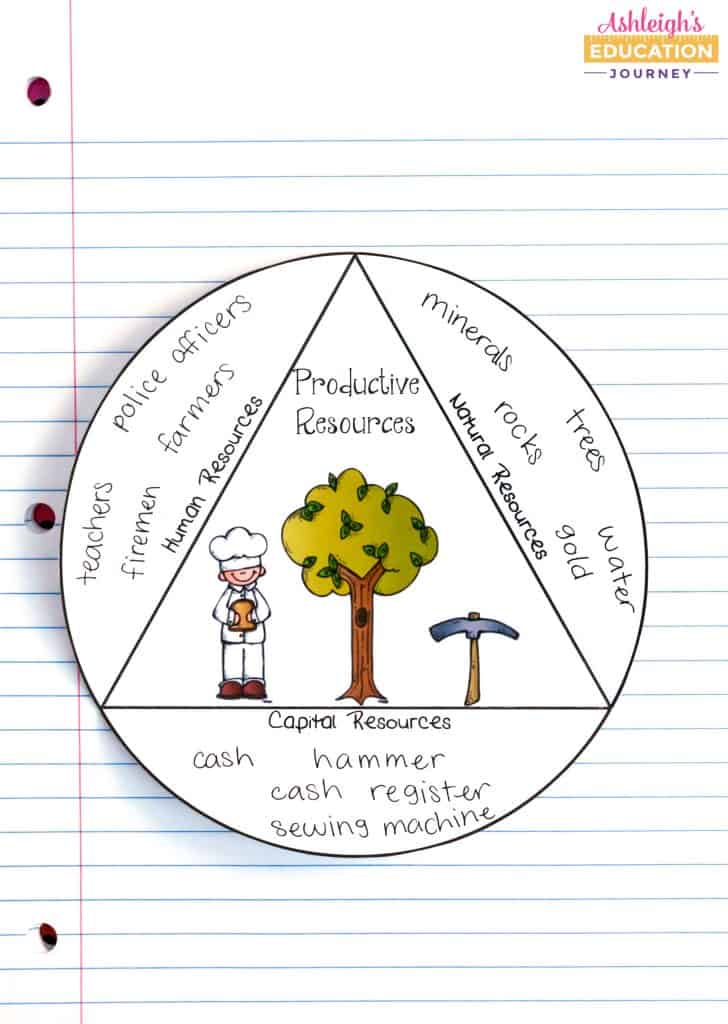
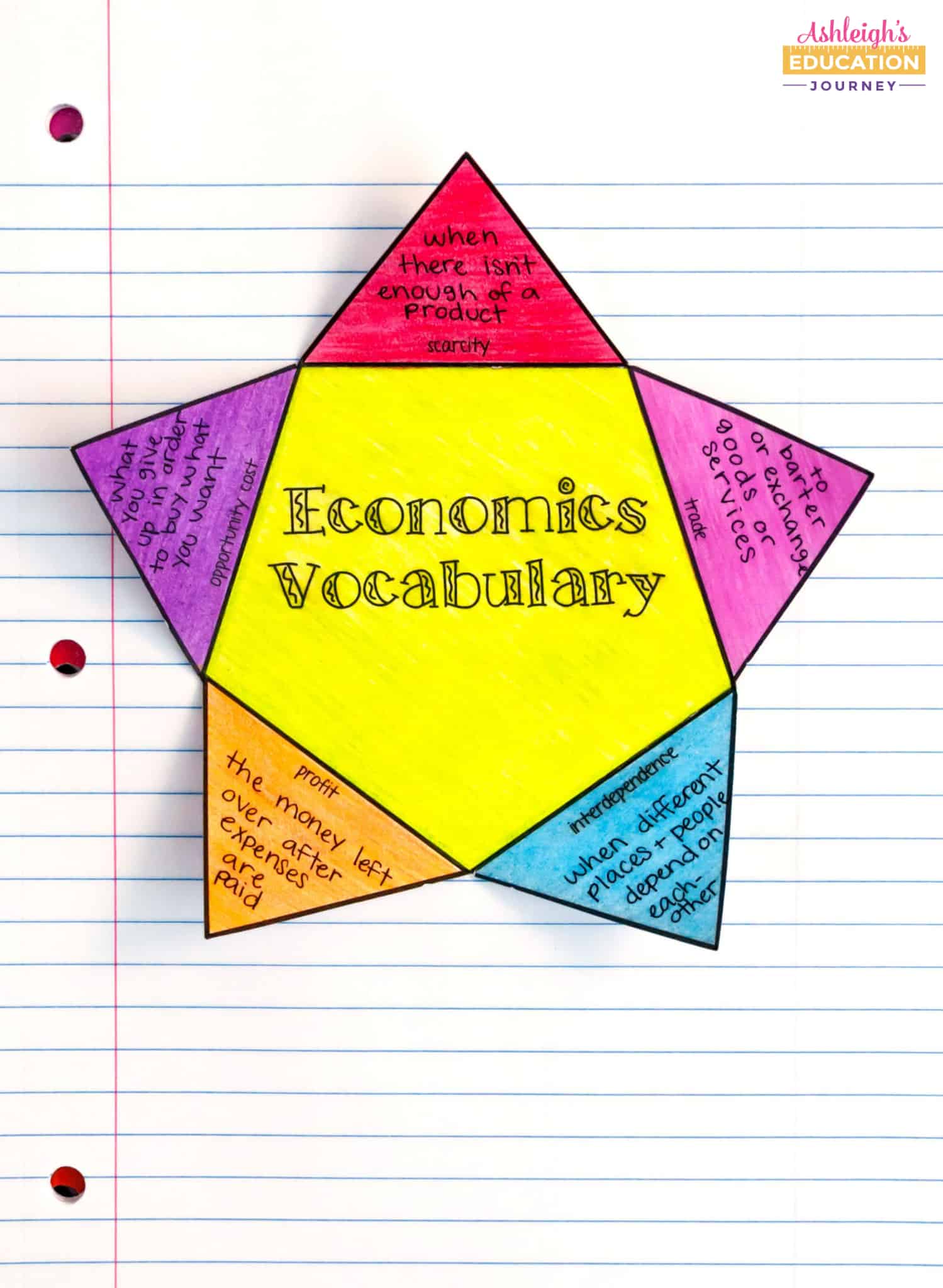
Hopefully, this post gives you a few new ideas for fun economics lessons! If you’d like to see ideas on creative ways to review social studies vocabulary, be sure to check out this blog post. You can read this post to read about a systematic approach to teaching social studies and science.
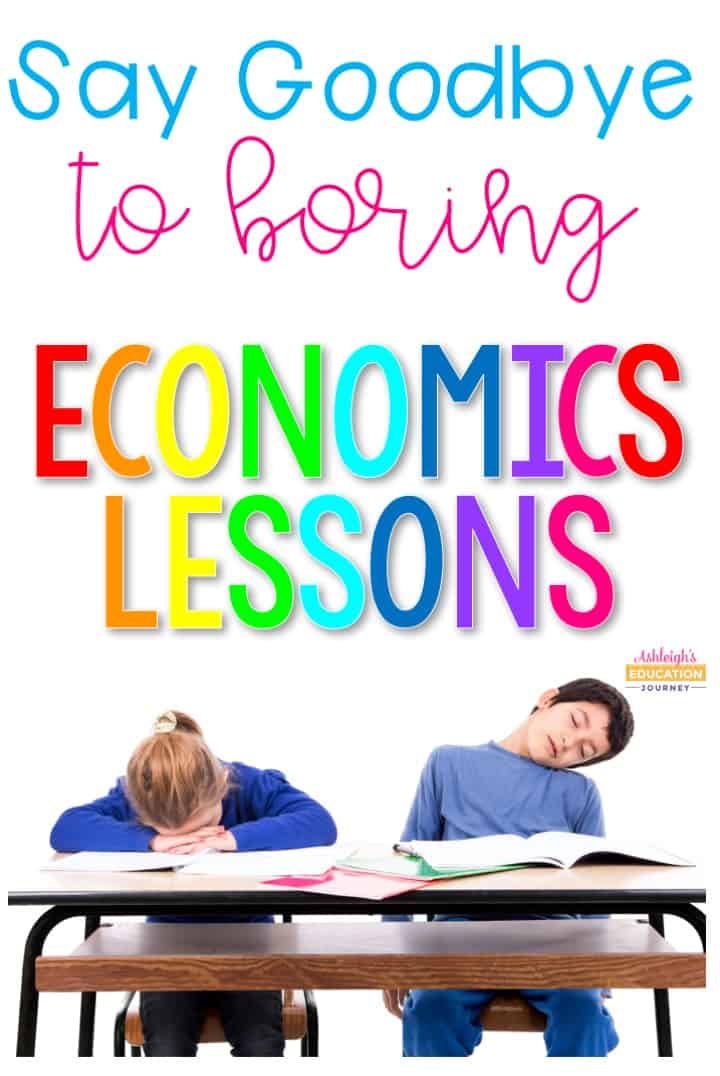


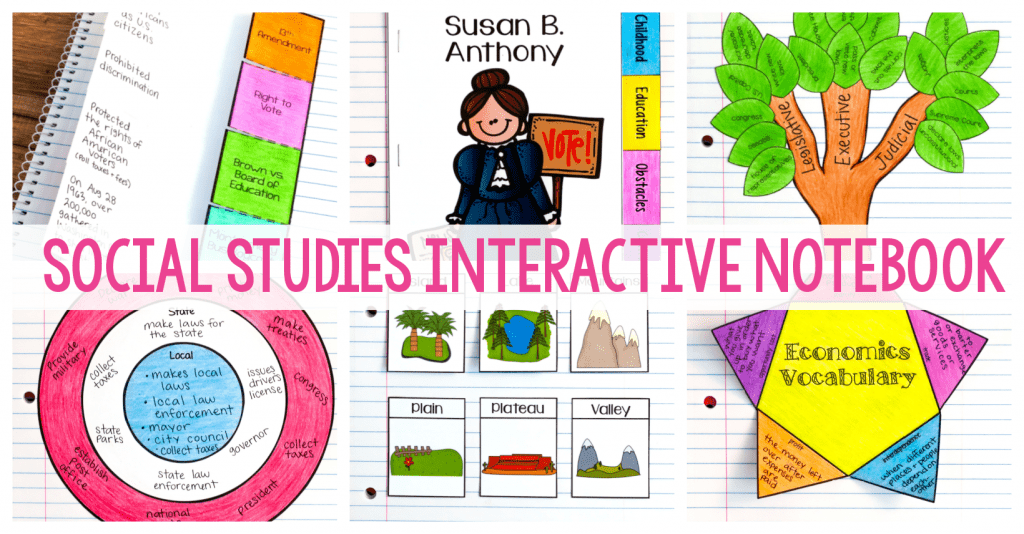
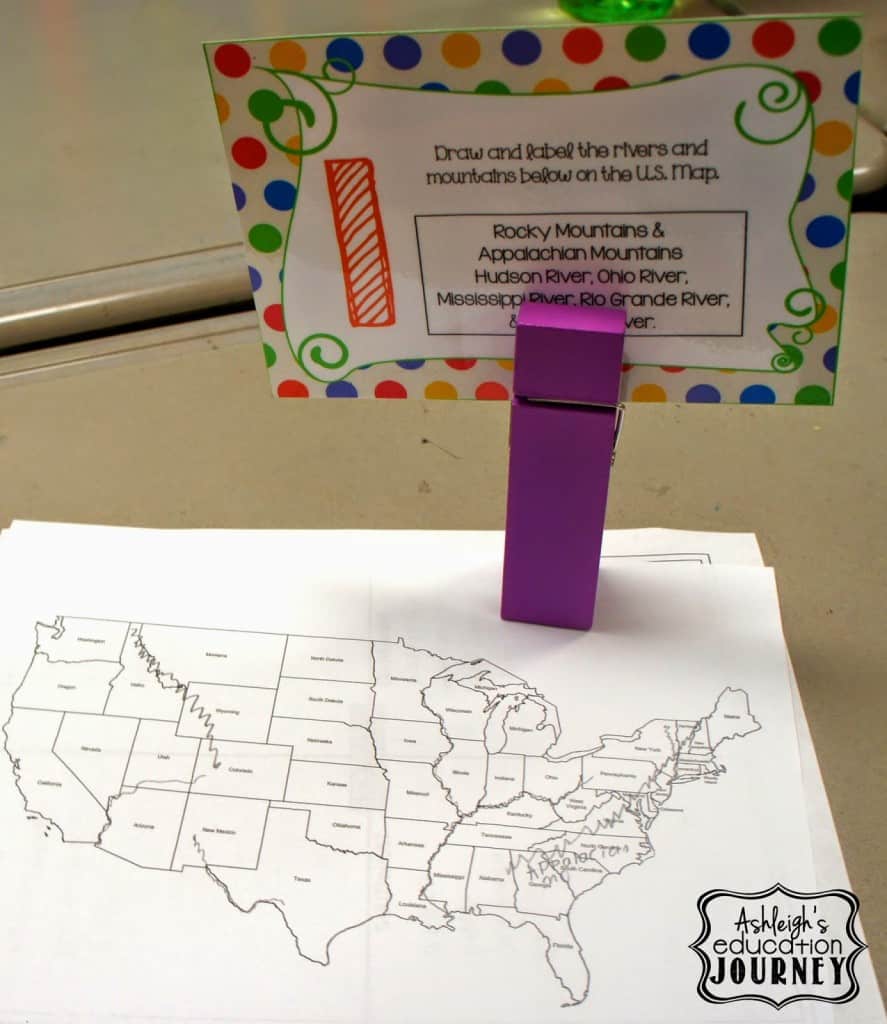
This lesson is awesome! I’m looking for some activities to do with my ESOL students and came across your page. Love it!